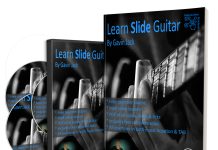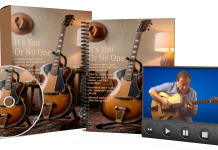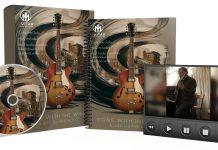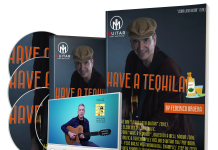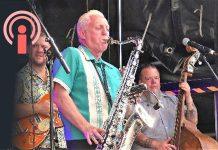
Teach yourself how to play guitar chords with our easy rhythm guitar lessons for beginners. ***Comes with online access to free guitar videos and audio for all examples. See and hear how each one is played by a teacher, then play along with the backing band.
Also includes music score animation for easy music learning.*** “Like other books by Gary Turner, this one is well named as ‘Progressive’. The lessons are staged in such a way as to make learning well structured.
5/5 stars.” – Frank Reid [Amazon UK] Progressive Guitar Method – Bar Chords contains all you need to know to start learning to be a great guitar chord player – in one easy-to-follow, lesson-by-lesson rhythm guitar tutorial.
Suitable for all ages and all types of guitars including electric guitar and acoustic guitar. Basic knowledge of how to read music and playing guitar is required to teach yourself to learn to play guitar chords from this book.
Teach yourself: • How to play electric guitar chords and how to play acoustic guitar chords • How to play guitar bar chords for beginners and how to play rhythm guitar including the most useful bar chord shapes, rock chord shapes, jazz chord shapes and rhythm strumming patterns • All the fundamental techniques for playing bar chords on guitar including percussive strumming and dampening • Practical rhythm guitar theory for learning how to read guitar music for beginners • Rhythm guitar tips and rhythm guitar tricks that every player needs for learning guitar chords • Shortcuts for how to learn guitar chords fast by getting the most from guitar practice sessions Contains everything you need to know to learn to play the guitar today.
Features include: • Progressive step-by-step easy guitar lessons written by a professional guitar teacher • Easy-to-read guitar music and guitar chords for beginners • Full color photos and diagrams • Guitar chord chart containing formulas and chord diagrams for all important guitar bar chords made from movable chord shapes including major, minor, seventh, sixth, major seventh, minor seventh, suspended, ninth etc.
• 50+ guitar chord exercises and guitar chord progressions in rock guitar, blues guitar, funk guitar and country guitar styles Beginner guitar lessons have never been this easy for anyone who wants to learn how to play the guitar, fast.
LearnToPlayMusic.com’s rhythm guitar lessons for beginners are used by students and guitar teachers worldwide to learn how to play guitar. For over 30 years, our team of professional authors, composers and musicians have crafted music lessons that are a cut above the rest.
We offer a huge selection of music instruction books that cover many different instruments and styles in print, eBook and app formats. Awarded the ‘Quality Excellence Design’ (QED) seal of approval for eBook innovation, LearnToPlayMusic.
com continues to set the standard for quality music education resources.
Read More


